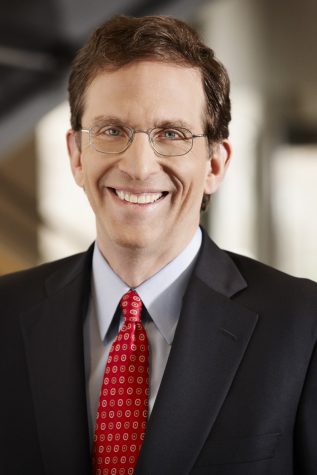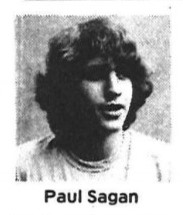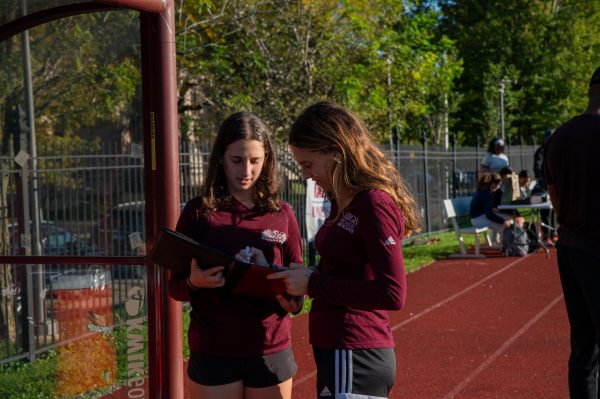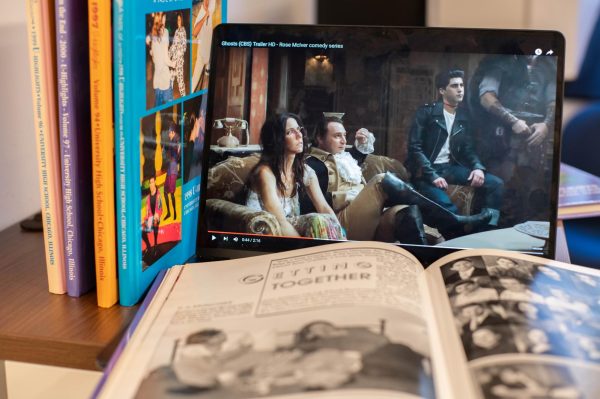Built on a Lab foundation: Alumnus Paul Sagan employs experiential learning in leadership roles

In 2001, Paul Sagan had only worked for a few years as chief operating officer then president at Akamai, a security and cloud service company. On Sept. 11 of that year, the company experienced trauma as one of its co-founders died aboard one of the airplanes used in that day’s terror attacks, leaving Mr. Sagan and a small group of other leaders to turn the fledgling startup into a profitable company.
Despite the large hole that was left in the startup, Mr. Sagan, a 1977 U-High alumnus, managed to fulfill the founder’s vision of turning Akamai into a profitable business.
The diverse, open curriculum and experiential learning Mr. Sagan experienced at Lab, fostered many of the leadership qualities he exudes today, including in his role as senior adviser and board member at Moderna, a young pharmaceutical company which has become a household name for its role quickly developing a coronavirus vaccine.
Before his time at Akamai, Mr. Sagan led an accomplished and successful career in journalism and public service. Although Mr. Sagan doesn’t have a STEM background, his liberal arts education gave him a flexible foundation, on which he developed his creative and inquisitive approach to leadership, which is credited for the transformation of Akamai into an S&P 500 company.
“There’s not a lot of math and deep science in my background and Akamai is one of the nerdiest companies out there,” Mr. Sagan said. “What I soon had to realize was that I’m the liberal arts person in the room and that background gives me a fresh perspective compared to a lot of the other folks who are also making the decisions in these companies.”
Mr. Sagan was already involved in the journalism business during his teenage years because his family operated the Hyde Park Herald — which his father still owns. He started building his foundation and got his first taste of leadership while as a member of the U-High Midway staff from 1973 to 1977.

“I got a lot of experience from the Midway,” he said. “The paper is student-run, so we made all of the decisions, and it was truly an experiential learning experience. I had the freedom to make creative and experimental decisions that helped me get the hang of the basics of leadership.”
Although he started out in traditional print media with the Herald and the Midway, Mr. Sagan was attracted to broadcast journalism starting in college.
“I felt that technology was going to push change in media, I should pick a field that would grow with me,” he said. “At the time, broadcast journalism was very new — of course now that’s difficult to imagine now — but at the time my decision to focus on TV was almost radical.”
According to Mr. Sagan, the rise of digital media is forcing journalism into another radical shift, a change that threatens the existence of critical investigations. News organizations are making much less with digital advertisements than physical ones.
“One of the challenges for mainstream media is that the economic model of advertising has just gotten completely hollowed out by online,” Mr. Sagan said. “What’s starting to replace it are subscription models or charity.”
From 1995 to 1997, Mr. Sagan served as president and editor of new media at Time Inc.
Mr. Sagan believes that although subscription models have seen success, the philanthropic model is healthier for democracy because it doesn’t require the reader to commit to access for just one perspective. He chairs the board of directors at ProPublica, a non-profit investigative journalism organization that raises money almost entirely through donations.
Mr. Sagan’s experience navigating the volatility of the philanthropic model helped teach him how to overcome adversities in other businesses.
“Early on, I went through a lot of the main problems that business executives face managing companies,” he said. “Because I’m so used to the idea of experiential learning, I learned a lot from these experiences even when they felt overwhelming.”
Even though Mr. Sagan has worked among very different careers and fields — journalism, telecommunications, economics, education and business — he sees some of the same problems wherever he goes.
“In all of these spaces there are all sorts of challenges about culture, conflict, team building, scale, managing through adversity,” he said. “You have to learn the specifics by being curious, asking questions and approaching issues with the active mindset of being motivated to fixing these problems because you like to, because it’s fun.”
In the past year, Mr. Sagan has been focused on his work helping overcome challenges in the development and distribution of Moderna’s coronavirus vaccine.
“The challenge was initially that we were a publicly-traded pre-commercial company, meaning we didn’t have any products but we still had to give quarterly reports to investors,” Mr. Sagan said. “So, how many resources can we pour into this project without losing the company if we make a mistake? What do we tell our investors? Those are the kind of questions I have lots of experience answering through my experiential learning backbone at Lab.”
U-High classes engaging in experiential learning, combined with the student-led Midway shaped Mr. Sagan’s working and leadership habits.
“A lot of what’s helped me navigate difficult times goes back to my time at Lab and the Midway,” he said. “The pressure of deadlines from a multitude of classes, and the fast-paced leadership of the newsroom forced me to act quickly, envision what I want and figure out how my peers can help get us there.”
Mr. Sagan uses a unique process, working backwards, when leading projects for broadcast journalism, business and advising.
“I learned that no matter how quickly a large decision has to be made,” he said, “if you don’t know where you want to go, you’re gonna wind up somewhere you don’t want to be.”
This article was updated on Feb. 5 at 5:39 p.m. to revise phrasing on at Mr. Sagan’s request. Although the quote was accurate in its original form, editors granted Mr. Sagan’s request because the changed portions were not relevant to the story.













Angie Holleb • Feb 4, 2021 at 7:23 pm
Nice profile on Paul Sagan and how his Lab experience has directly affected his business decisions and success! What an interesting career he’s had with great variety and leadership. Thanks for introducing him to the readership.